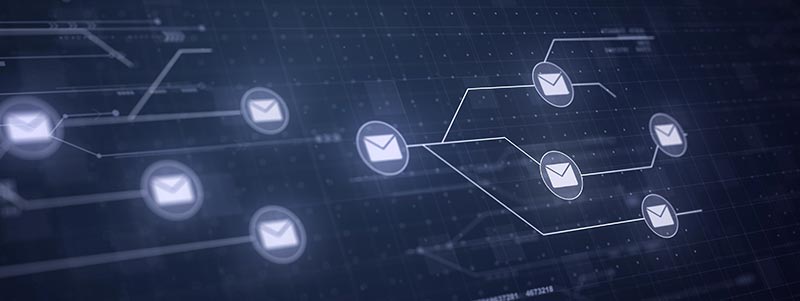With the internet still plagued by phishing scams and nuisance emails, spam filters play a vital role in protecting us online. But how can accounting firms help to ensure that their own emails make it through to clients' inboxes, rather than landing in the junk folder? The answer lies with something known as DKIM, or DomainKeys Identified Mail…

What is DKIM?
Originally developed by the clever folk at Yahoo!, DKIM is an authentication method used to verify that an email originates from a trusted domain and hasn't been intercepted or changed after leaving the original server.
It works by adding a digital signature, which is secured with encryption, to every outgoing email. The receiving server then checks the incoming email has a valid DKIM signature affixed to it, enabling it to ascertain that the email, message body and any attachments haven't been modified.
DKIM often works in conjunction with SPF (Sender Policy Framework), another authentication protocol that helps recipients' servers confirm the identity of incoming emails. By creating an SPF record, you can state which mail servers are authorised to send mail from your domain.
The problem
When sending mailshots on your behalf, we need to set the Sender address to be a unique address within a domain that we manage. This means that your emails will have a FROM address similar to your-domain@a2ts.co.uk ('your-domain' is your actual domain name e.g. accsys@a2ts.co.uk). However, the REPLY-TO address will be whatever you've entered in the Email field of your mailer or set up in your account for newswires. So, while recipients will be able to reply to your email, they may not recognise the email address from which the message originates.
What's more, if the recipient's system can't find a valid DKIM signature, it's more likely to mark your email as spam – and that's not ideal when you're trying to market to clients and prospects.
The solution
The good news is that once you've set up DKIM email signing, we'll be able to send emails from your domain. To do this, you'll need to add a record to your domain, which contains a public encryption key that we can use to sign your emails. When the emails are then received by your customers' mail servers, they'll be able to check that the emails are genuine and from you.
How email authentication can help you
As the global standards for email security, DKIM and SPF are now essential for anyone planning to send out mailshots. Not only do they help to protect against phishing, but they also improve email deliverability. And when you're conducting an email campaign, deliverability is key to its success.
If the recipient's server can validate your email's authenticity by checking its DKIM signature, your message is less likely to get caught by the spam filter. And, let's be honest, how often do people really check their junk for genuine emails?
Plus, sending out emails from your own domain helps to protect your brand and makes you a more reputable sender in the eyes of partners, clients and vendors.
However, bear in mind that while email authentication protocols can certainly improve deliverability, they can't guarantee your email won't land in the spam folder. Delivery rates depend on a variety of factors, including the type of email system the recipient is using.
It's also worth remembering that clients and prospects won't appreciate being bombarded with emails. If you send out mailshots too frequently, there's a risk that recipients will simply view your emails as spam, even if they do succeed in reaching their inbox. While DKIM and SPF can greatly improve your email marketing, it's important to follow your standard emailing practices to ensure your emails continue to be of high quality.
Sounds great – how do I get started?
Setting up DKIM and SPF involves making changes to your DNS (Domain Name Server) records. As this is a technical process, we recommend that you ask the person responsible for managing your firm's IT to complete the task for you.
If you're an existing totalSOLUTION/PracticeTrack Online website customer and would like to use DKIM signing on the emails we send for you, you'll need to login to your controlPANEL* to activate it. From there, you'll see a menu item under 'Administration', where you (or your IT contractor) will be able to follow instructions on how to set up DKIM.
We are happy to answer any questions you may have.
Important: note that we won't be able to make the changes on your behalf as we have no control over your DNS records.
*How do I log in to controlPANEL?
If you have forgotten your username and password email support@accsys.org.